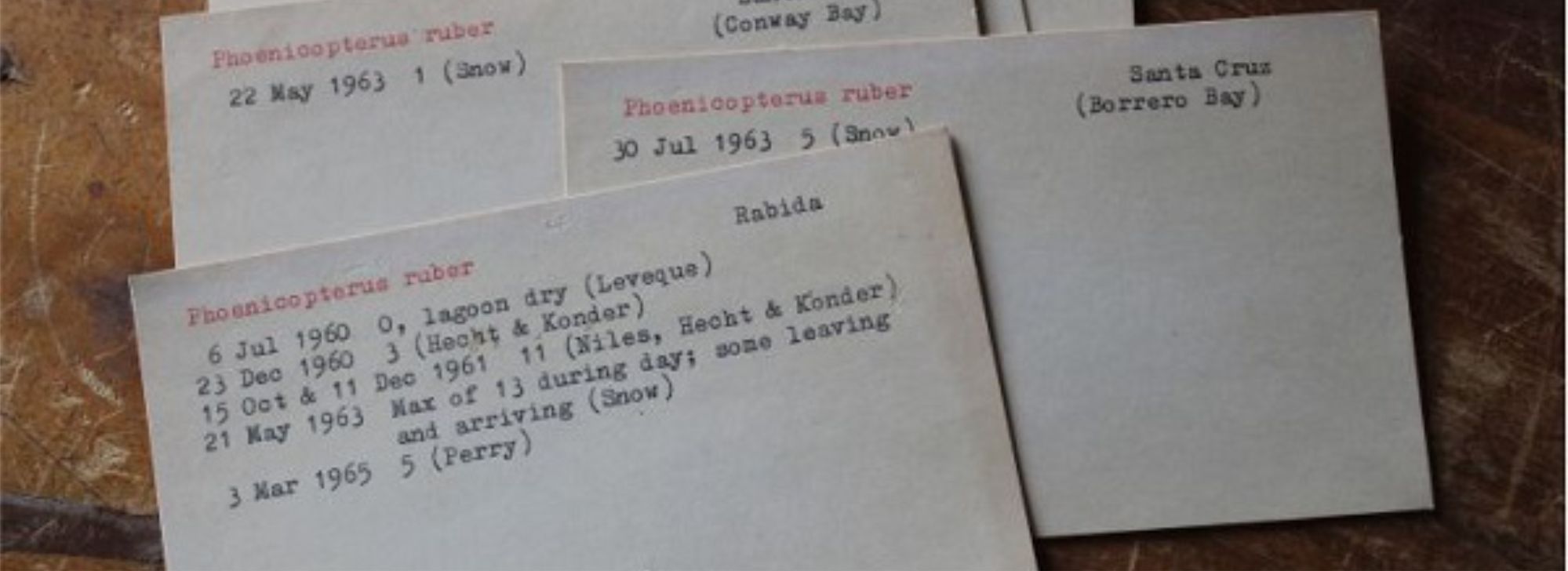Identifying flamingos
Among the most common materials in knowledge and memory management institutions (libraries, archives and museums) are the catalog cards.
They are rectangular cards, made of white cardboard, generally of almost standardized dimensions. Such elements were used, until the appearance of electronic / digital databases, for the inventory, cataloging and classification of all assets managed as cultural heritage.
In general, such management included (and, in fact, continues to include) the use of a series of documental protocols, standards and norms that allowed the element to be uniquely described, so that its identification and recovery was possible.
However, not all the cards fulfilled that task. In scientific institutions, they served to organize other types of information.
In some cases, they allowed the collection and classification (usually in alphabetical order) of bibliography related to a given subject. In others, they facilitated the systematization of results or observations. And, on occasions, there were cross-catalogs, which allowed access to the same information from two, three or more starting points (e.g. author name, geographic location, Latin species name, date, etc.).
The collection of catalog cards kept in the Charles Darwin Foundation's (CDF) archive includes both old library cards and "biological" ones.
Among the latter are the records of sightings of different endemic species of the Galapagos Islands, both in the form of citations taken from specialized literature, and in the form of direct references to the work of the scientists of the Charles Darwin Research Station (CDRS). Direct references may or may not be supported by subsequent bibliographic citations: in such a case, the mentions on the cardboard cards are, in many cases, the only existing written testimony that accounts for a sighting, by a specific person, in a location and a specific date, of a Galapagoan species.
It should be noted, then, the importance of the data kept on those items. The biological cards are organized by species and sub-organized by place and by date, so that, for a given animal or plant, there are two series of records: one organized geographically (sighting places) and the other chronologically (sighting date). Each event carries with it the name of the person who registered the species.
An example of these files corresponds to the long series dedicated to Galapagos flamingos, in which a good number of unique data are reflected.
Catalog cards have been out of use for at least two decades. However, they continue to keep their information safe, and they have survived the test of time. Something that cannot always be said about electronic and digital media.
Aa.Vv. [Cards on Galapagos flamingos]. [Card]. [N.d.] : Aa.Vv., [ca1990]. [N.d.] : [n.d.] : [n.d.]. DDC 508. Well preserved.
Subject categories: Galapagos biodiversity | History of science | Ornithology
Keywords: Archives | Birds | Cards | Catalogues | Flamingos | Libraries
Time framework: 1990
Text & picture: Edgardo Civallero (edgardo.civallero@fcdarwin.org.ec).
Publication date: 1 December 2021
Last update: 1 December 2021
